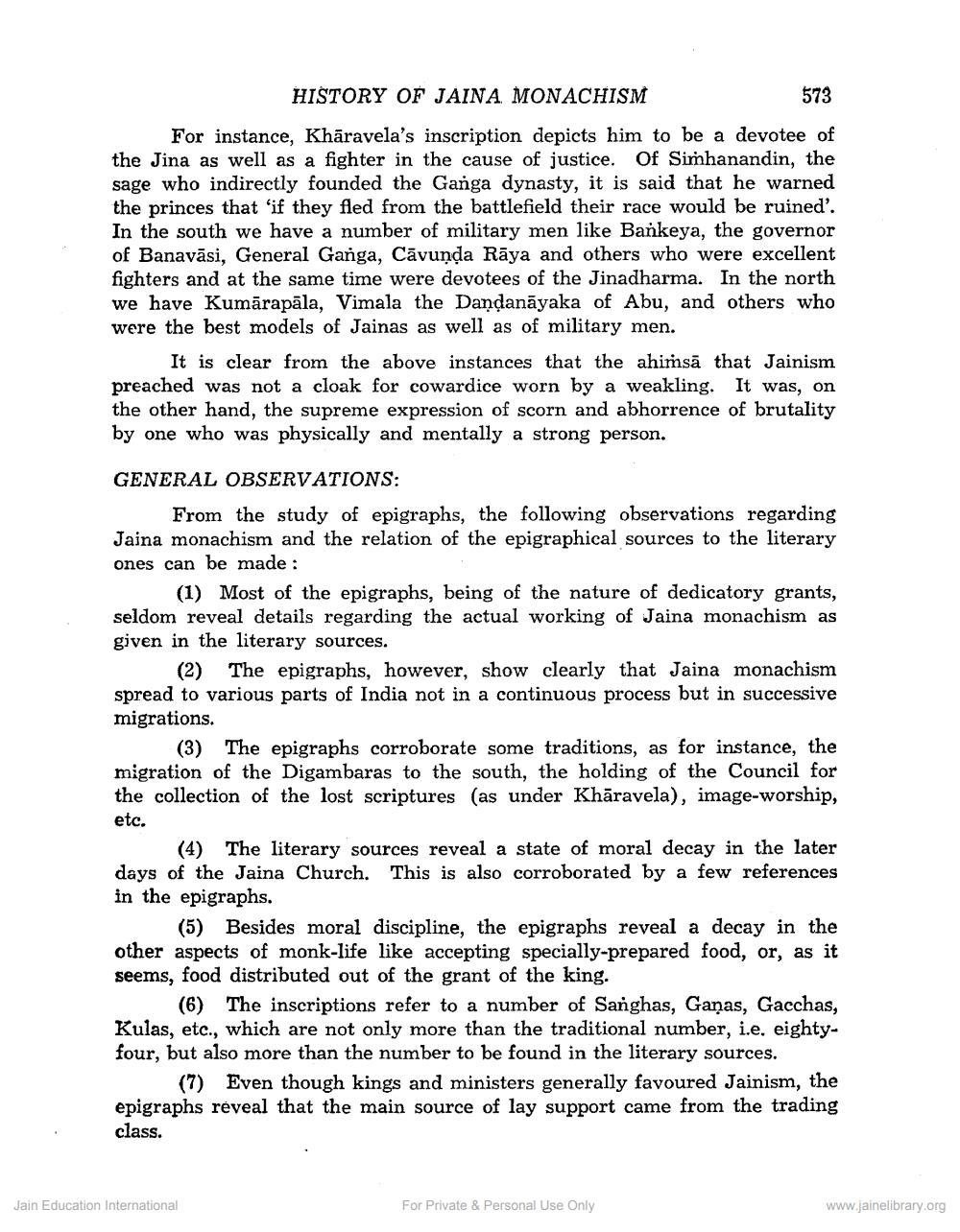________________
HISTORY OF JAINA MONACHISM
573
For instance, Khāravela's inscription depicts him to be a devotee of the Jina as well as a fighter in the cause of justice. Of Simhanandin, the sage who indirectly founded the Ganga dynasty, it is said that he warned the princes that 'if they fled from the battlefield their race would be ruined'. In the south we have a number of military men like Bankeya, the governor of Banavāsi, General Ganga, Cāvunda Rāya and others who were excellent fighters and at the same time were devotees of the Jinadharma. In the north we have Kumārapāla, Vimala the Dandanāyaka of Abu, and others who were the best models of Jainas as well as of military men.
It is clear from the above instances that the ahimsā that Jainism preached was not a cloak for cowardice worn by a weakling. It was, on the other hand, the supreme expression of scorn and abhorrence of brutality by one who was physically and mentally a strong person.
GENERAL OBSERVATIONS:
From the study of epigraphs, the following observations regarding Jaina monachism and the relation of the epigraphical sources to the literary ones can be made :
(1) Most of the epigraphs, being of the nature of dedicatory grants, seldom reveal details regarding the actual working of Jaina monachism as given in the literary sources.
(2) The epigraphs, however, show clearly that Jaina monachism spread to various parts of India not in a continuous process but in successive migrations.
(3) The epigraphs corroborate some traditions, as for instance, the migration of the Digambaras to the south, the holding of the Council for the collection of the lost scriptures (as under Khāravela), image-worship, etc.
(4) The literary sources reveal a state of moral decay in the later days of the Jaina Church. This is also corroborated by a few references in the epigraphs.
(5) Besides moral discipline, the epigraphs reveal a decay in the other aspects of monk-life like accepting specially-prepared food, or, as it seems, food distributed out of the grant of the king.
(6) The inscriptions refer to a number of Sanghas, Gaņas, Gacchas, Kulas, etc., which are not only more than the traditional number, i.e. eightyfour, but also more than the number to be found in the literary sources.
(7) Even though kings and ministers generally favoured Jainism, the epigraphs reveal that the main source of lay support came from the trading class.
Jain Education International
For Private & Personal Use Only
www.jainelibrary.org




